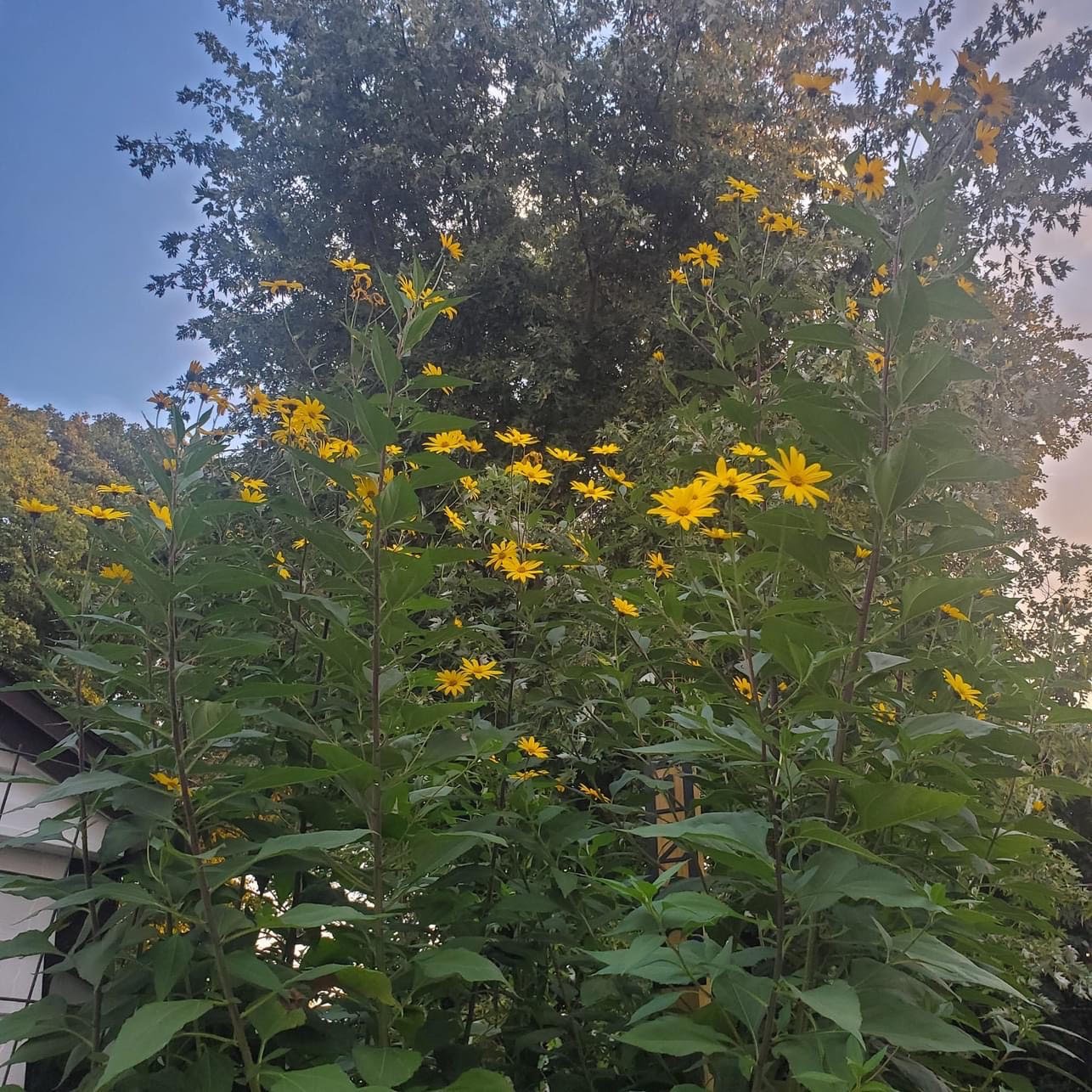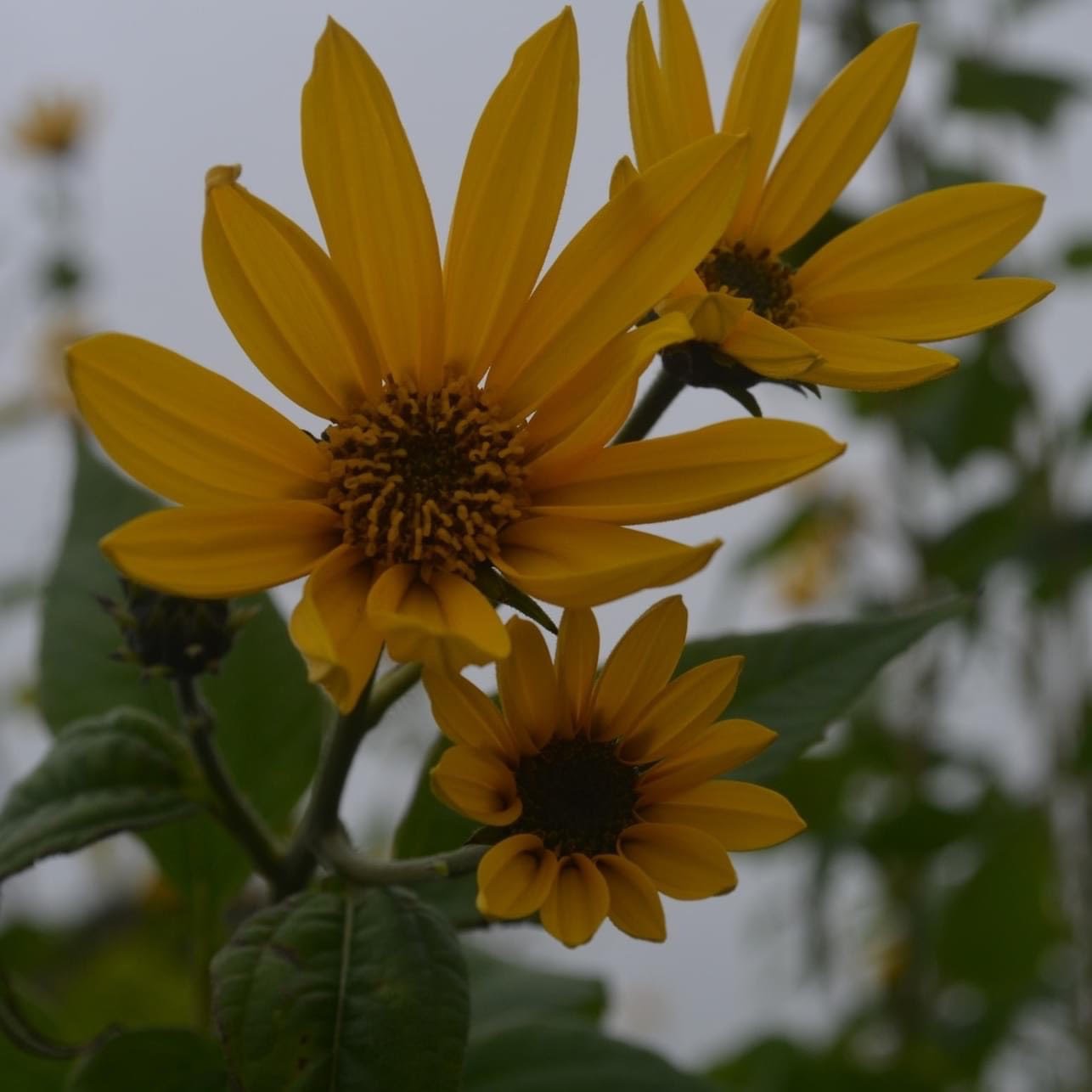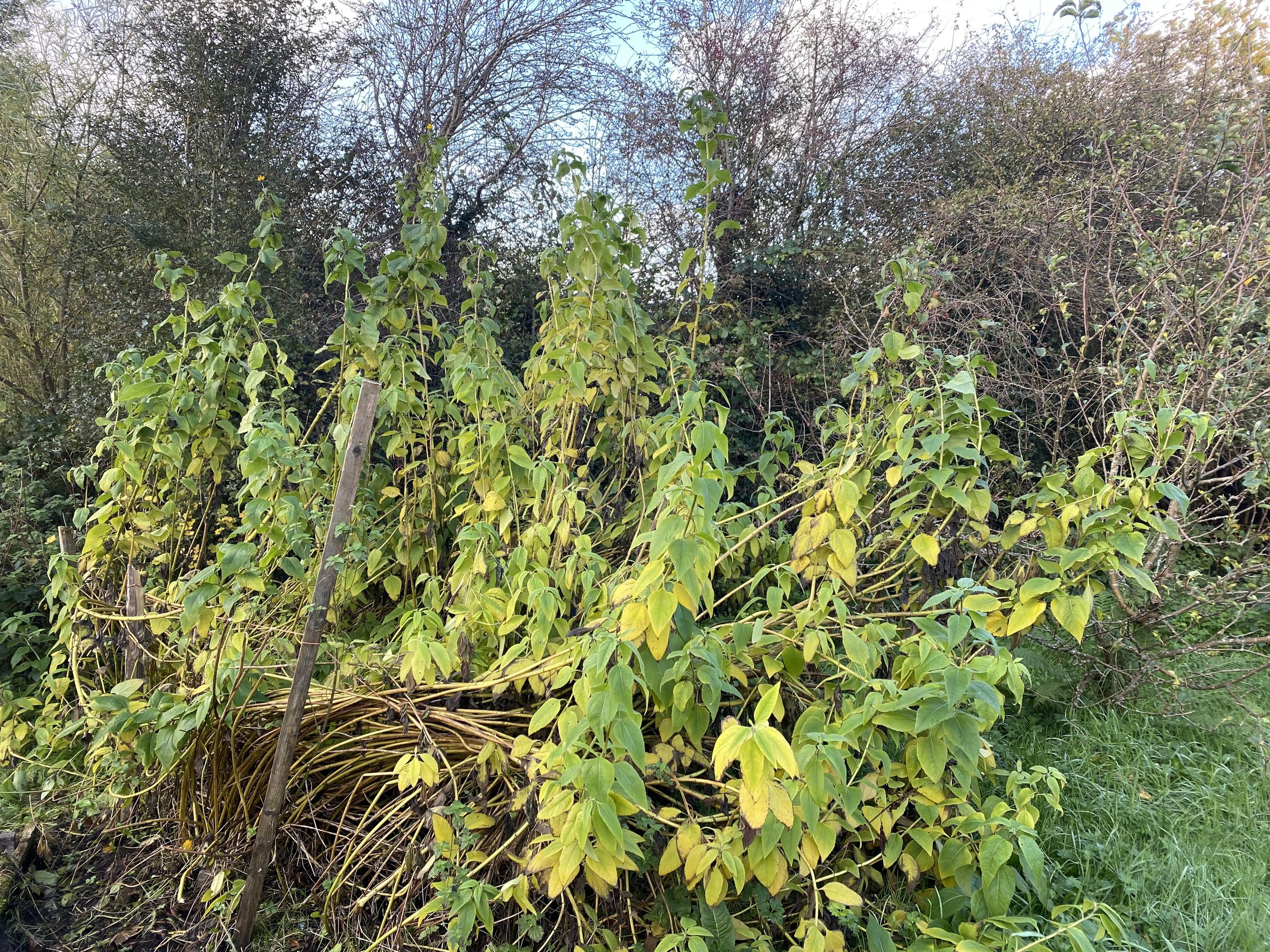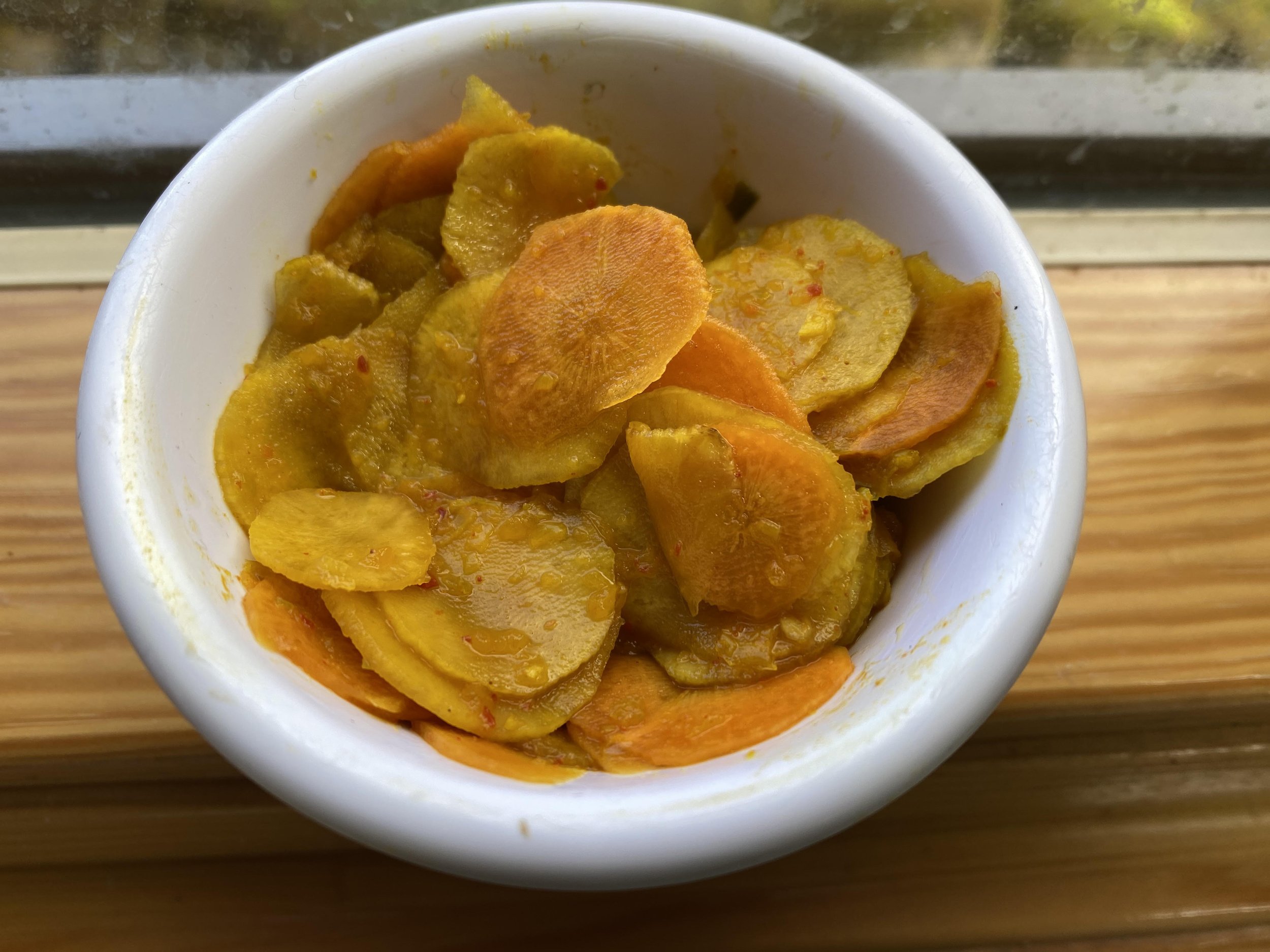Jerusalem Artichoke or Topinambur – A powerful vegetable
Growing up in Baden-Württemberg in Germany I was aware of what my parents called “Roter Rossler”, but much too young to enjoy this digestive spirit made from Topinambur and Beetroot. Later in my late twenties I was introduced to Topinambur at our local healthfood store and when we moved to Ireland one of the first crops we grew was Topinambur, because it is definitely one of the easiest and most productive vegetables to grow, but first things first.
What’s in a name?
Helianthus tuberosus is known here as Jerusalem Artichoke, but they are neither artichokes, nor from Jerusalem. The Italian for sunflower artichoke is girasole articiocco and girasole appears to have morphed into Jerusalem over the centuries. It is a native of the North American plains and has been cultivated by the indigenous population since prehistoric times, before it made its way across the Atlantic to Europe in 1640. The Native Americans called them sunroots which is definitely the best name for this wonderful vegetable. In vegan and vegetarian circles they are often referred to as sunchokes. In our native Germany Jerusalem Artichokes are known as Topinambur or Erdapfel (Earth Apple) and often called “Diabetiker-Kartoffel” (diabetes potato). Rich in the carbohydrate inulin it has been promoted as a healthy choice for type 2 diabetics.
How to grow Topinambur/Jerusalem Artichokes
In our experience, once you grow them you will always have them, as it is nearly impossible to find all the tubers when harvesting and each small part of the root will produce another plant. That is why it makes sense to grow them in a permanent spot. As plants grow up to 3m hight, they can act as a windbreak (but would need staking against strong winds), but can naturally shade other plants in the garden, so pick your site well.
You can plant tubers from April into well prepared soil, spaced at 15cm between tubers and 1m between rows. Tubers can be left in the soil and harvested as needed. If you have heavy wet soil it is best to lift and store them. After harvest store the tubers in sand in a cool but frost free shed. They will easily keep for 4 months. The huge foliage makes good compost. As Topinambur/Jerusalem Artichokes are pest and disease free, growing in the same spot does not cause any problems.
Varieties
The tubers come in many shapes and colours depending on the variety and growing conditions. They can be white, pale brown, dark brown, red and purple in colour and knobbly, elongated, round and club-shaped in form. The size of the tubers ranges from 7cm to 15cm. There are a number of varieties available in Europe, but none of them are well known or easily available. Our variety is Fuseau (long, smooth, white tubers, excellent yield) and seems to be the variety of choice of people growing them. Quickcrop have them in their catalogue and Fruithill Farm has Rema (red skinned, round and knobbly), Blanco (pale in colour and smooth) and Bianca (purple and knobbly).
Nutritious and tasty and with a reputation
Topinambur/Jerusalem Artichoke tubers are very nutritious. They have zero fat, contain an optimal ratio of minerals (iron, magnesium, potassium, manganese, calcium, phosphorus, silicon and zinc), have Vitamins B, C and E and are rich in protein. These proteins contain 10 essential amino acids that are not produced by the human body and come from food. As they are rich in pectin (11% of dry matter weight), they can help to reduce cholesterol levels, normalise bowel movements and improve metabolic processes.
The most important benefit is the high concentration of the rare natural biologically active substance – inulin, which is responsible for the uniquely delicious slightly sweet flavour of the tubers. This carbohydrate is similar to fructose and can be up to 17%. As our digestive enzymes cannot break down the inulin it moves on into the large intestine, where the task of breaking it down is therefore sub-contracted to 'friendly' intestinal bacteria. As a byproduct they produce carbon dioxide and Topinambur/Jerusalem artichokes have a reputation for causing wind. It only affects some people and is usually counteracted by eating it with parsley. And the more often you eat them the better your body deals with the sugar!
Finally the delicious tubers can be used in various ways in the kitchen. It can be eaten raw,
grated in a salad or cooked, boiled, roasted or blended in a soup. They are also one of the best pre-biotic foods and encourages all the good bacteria in the lower gut. The rumbling in your stomach and other side-effects are the result of the feeding of all the good bacteria.
Jerusalem Artichoke as a Strategic Crop for Solving Problems?
Topinambur/Jerusalem artichokes are at present mainly grown for its edible tubers in North America, Europe, China, Russia, and Korea and also in Egypt, Australia and New Zealand. They are still an underutilised crop but have huge potential and could become a viable crop for Irish or European producers.
It is also be grown as livestock feed and sometimes as an ornamental plant especially for the flowering types, but there are multiple uses considered and researched worldwide at present, e.g. as functional food, as a natural herbicide and fungicide, as an energy crop for biofuel production and as paper pulp.
In 2018 the organic gardener and Nuffield scholar Klaus Laitenberger has published a report “The potential of growing Yacon and other Lost Crops of the Incas and Jerusalem Artichoke as crops and functional foods in Ireland”, pointing to the huge potential of this undervalued crop. In his report he quotes a study by Simakov and Starovoytov (Simakov , E. A. – Starovoytov , V. I. (2007) Potatoes and Jerusalem artichoke – products of the future. In Informagrotekh, 2007), where they claim that Jerusalem Artichokes are one of the best crops for absorbing carbon dioxide. They calculated that one hectare of forest can absorb 3-4 tons of carbon dioxide, while one hectare of Jerusalem artichoke can absorb 6 tons of carbon dioxide. They also found that the strong woody stems of Jerusalem artichokes make a good raw material for the pulp for the paper industry. They reckon that one hectare of Jerusalem artichoke can save five hectares of forest.
The future of the Jerusalem Artichoke/Topinambur, an unassuming, prolific and hardy plant with so many nutritional and environmental benefits certainly has only just begun.
More about the confusing name of the Jerusalem Artichoke.
The Jerusalem version is actually related to the sunflower. The sunflower is called girasole in Italian, - it means gyrating or turning to the sun. And, at least according to folk etymology, girasole through some slip of nomenclature turned into Jerusalem.
That is even more historically fascinating, considering that the vegetable in question is native to America. It was indigenous to the central United States and Canada and was first taken to France by Samuel de Champlain in 1616, from which moment it began to flourish. After its introduction to France, the easily proliferating root vegetable was first referred to as poires de terre (earth pears) or artichauts de Canada (Canadian artichokes).
In today's French kitchens it is known as a topinambour, again for an unusual reason. At approximately the same time that they were introduced into that country, there was an exhibition of one sort or another being staged in France. And one of the features of that exhibition was a tribe from Brazil known as topinambours. The vegetable was thus christened and the name stayed.
And if that isn't amusing enough, one of the first dishes into which the ''artichoke'' was converted was a puree known in traditional French kitchens as puree Palestine, the creating chef having heard that the vegetable was imported from Jerusalem. There is a recipe for that puree in Auguste Escoffier's ''Le Guide Culinaire'': It is on page 144 and calls for 800 grams of topinambours.






